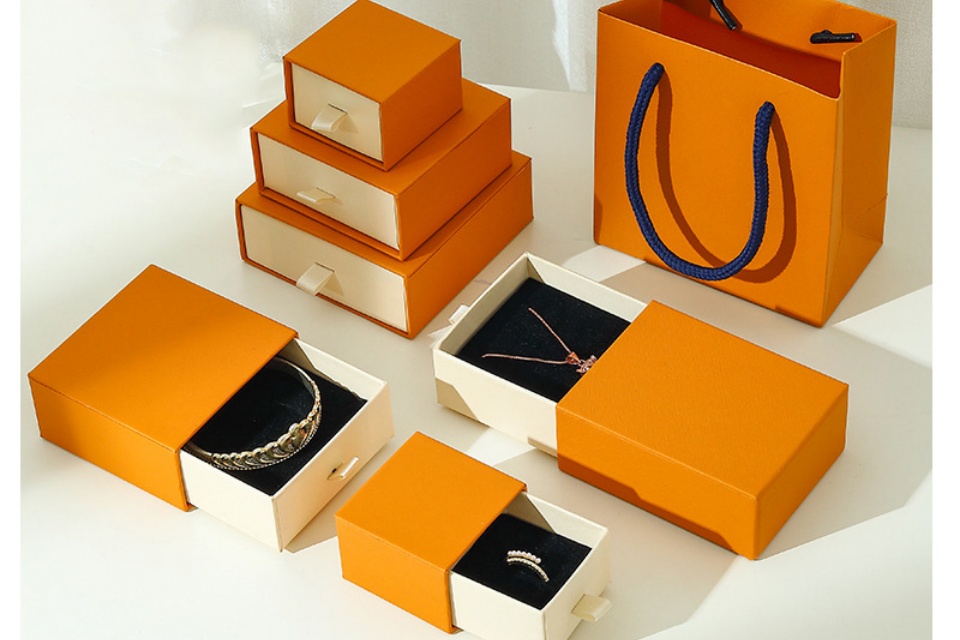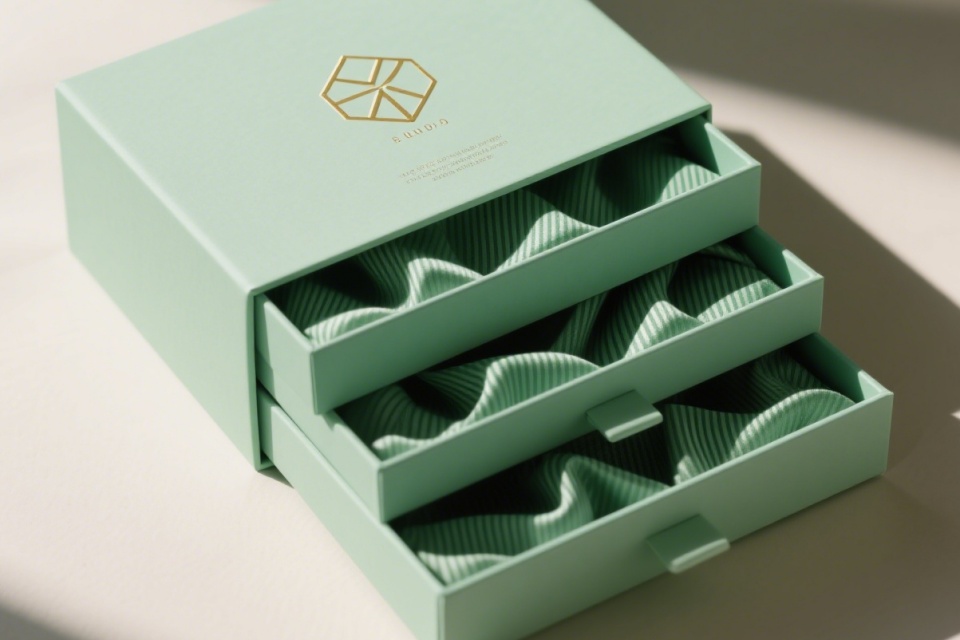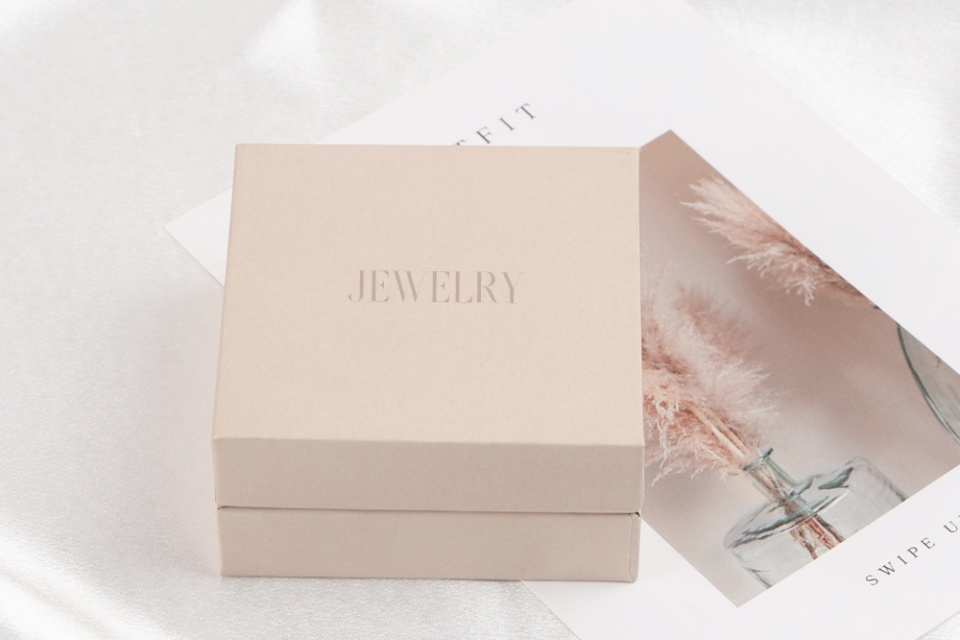Industry News
Sustainable Jewelry Packaging Options
Sustainable Jewelry Packaging Options
Summary
Sustainable jewelry packaging refers to eco-friendly alternatives employed in the packaging of jewelry items, emphasizing materials and designs that minimize environmental impact while meeting consumer preferences for sustainability. As global awareness of environmental issues rises, many consumers actively seek products that align with their values, making sustainable packaging a notable trend within the jewelry industry. This shift is driven by a growing demand for eco-conscious practices and materials that promote resource conservation and waste reduction.
The materials used in sustainable jewelry packaging can be broadly categorized into recycled, biodegradable, and organic fabrics. Recycled materials, such as paper and cardboard, help reduce waste and conserve resources by repurposing existing materials. Biodegradable options, including plant-based plastics and mycelium, offer alternatives that break down naturally, while organic fabrics like cotton and hemp provide durable, reusable solutions. Innovative design approaches, such as minimalist packaging, further enhance sustainability by reducing material usage and promoting functionality.
Implementing sustainable packaging not only benefits the environment but also offers economic advantages to jewelry brands. Cost savings can be realized through bulk sourcing of eco-friendly materials and reduced shipping expenses due to lighter packaging. Additionally, a commitment to sustainability can enhance a brand's image, fostering customer loyalty among eco-conscious consumers. In fact, studies suggest that a significant percentage of consumers are more likely to purchase from brands that prioritize sustainable practices, underscoring the importance of adopting eco-friendly packaging solutions in the competitive jewelry market.
Despite the benefits, the transition to sustainable jewelry packaging is not without challenges. Brands may face supply chain complexities and cost considerations when sourcing sustainable materials. However, collaborations with local suppliers and innovative design strategies can mitigate these obstacles, allowing companies to embrace sustainability effectively. As consumer demand for eco-friendly options continues to grow, the jewelry industry is likely to see increased adoption of sustainable packaging practices that not only protect the environment but also resonate with the values of modern consumers.
Types of Sustainable Packaging Materials
Sustainable jewelry packaging encompasses a variety of materials that not only minimize environmental impact but also align with consumer preferences for eco-friendly products.
Recycled Materials
Recycled materials play a crucial role in sustainable packaging by repurposing existing resources and reducing the need for virgin materials. Common options include recycled paper, cardboard, and plastics. For instance, jewelry brands are increasingly utilizing recycled paper and cardboard for their packaging, effectively lowering waste emissions and conserving natural resources. An example is the French jewelry brand Boucheron, which redesigned its jewelry box series using only two materials—aluminum and felt—significantly cutting down material usage from eleven to two.
Biodegradable Materials
Biodegradable materials, such as plant-based plastics and mycelium, are gaining popularity for their ability to break down naturally in the environment. Mycelium, derived from fungi, can be molded into protective packaging forms, while seaweed-derived films offer a renewable and compostable alternative. Additionally, plantable packaging, which contains seeds embedded in the material, encourages consumers to engage with sustainability by allowing them to plant the packaging after use.
Organic Fabrics
Organic fabrics, including cotton, hemp, and linen, are excellent choices for sustainable jewelry packaging due to their natural origins and reusability. Cotton tote bags and muslin pouches not only provide an eco-friendly option but also enhance the brand's aesthetic, appealing to consumers who value sustainable luxury. These materials are often durable and can be reused multiple times, further reducing waste in the supply chain.
Innovative Design Approaches
The design of packaging also plays a critical role in sustainability. Minimalist packaging focuses on eliminating unnecessary layers and complexity, which not only reduces waste but also enhances the overall brand presentation. This approach aligns with consumer demand for simplicity and functionality, making it a popular choice among jewelry brands.
Certifications
Sustainable packaging materials can often be verified through certifications, such as the Forest Stewardship Council (FSC) for paper products or Cradle to Cradle for overall sustainability. These certifications assure consumers of the eco-friendliness of the materials used, fostering trust and encouraging the adoption of sustainable practices.
By integrating these sustainable materials and design principles into their packaging, jewelry brands can significantly reduce their environmental footprint while catering to a growing market of eco-conscious consumers.
Benefits of Sustainable Jewelry Packaging
Sustainable jewelry packaging offers numerous advantages, both environmentally and economically, making it an increasingly appealing choice for brands in the jewelry industry.
Environmental Impact
One of the primary benefits of sustainable packaging is its reduced environmental impact. By using materials that involve minimal mining, lower energy consumption, and less reliance on harmful substances, sustainable packaging significantly decreases pollution and resource depletion associated with traditional packaging materials like plastic and foam. Moreover, eco-friendly options, such as recycled paper and corrugated cardboard, not only contribute to waste reduction but also promote a circular economy by giving a second life to discarded materials.
Economic Advantages
Adopting sustainable jewelry packaging can lead to cost savings for businesses. Many eco-friendly materials can be sourced affordably in bulk, and their lightweight nature often results in lower shipping costs. Additionally, as the demand for sustainable packaging solutions grows, supply chains are likely to become more efficient, further reducing expenses. Brands that switch to green packaging can minimize excessive material use, thereby cutting down on waste and overhead costs associated with packaging.
Enhanced Brand Image
Implementing sustainable practices in packaging can greatly enhance a brand's reputation. As consumers become more environmentally conscious, they tend to prefer brands that demonstrate a commitment to sustainability. In fact, 78% of U.S. consumers consider living a sustainable lifestyle important, and many are more likely to purchase from brands that offer eco-friendly options. By prioritizing sustainable packaging, jewelry brands can differentiate themselves from competitors and foster customer loyalty through shared values.
Innovation and Consumer Demand
The shift toward sustainable packaging also encourages innovation within the industry. As brands seek eco-friendly solutions, they motivate suppliers and manufacturers to invest in research and development, leading to better materials and practices over time. This positive feedback loop not only benefits the environment but also allows brands to respond effectively to the growing consumer demand for sustainability in their purchasing decisions.
Best Practices for Implementing Sustainable Packaging
Material Selection
Choosing the right materials is crucial for sustainable packaging. Traditional materials like plastic and Styrofoam are increasingly being replaced by eco-friendly alternatives such as recycled paper, cardboard, plant-based plastics, and compostable materials. These options not only help reduce the carbon footprint but also promote a circular economy by facilitating recycling and composting processes. Certifications like FSC for paper products and BPI for compostables can validate these efforts, ensuring responsible sourcing and adherence to sustainability standards.
Innovative Design Approaches
Sustainable packaging is not solely about materials; innovative design is also essential. Minimalist packaging that eliminates unnecessary layers can enhance both functionality and aesthetic appeal, reducing waste while maintaining a high-end look. Additionally, incorporating reusable packaging designs encourages consumers to use the packaging multiple times, further decreasing single-use waste. Clever design elements, such as self-healing materials and carbon capture packaging, can further differentiate brands and contribute positively to the environment.
Transparency and Communication
Effective communication with stakeholders about sustainability practices is vital. Brands should transparently discuss the materials used and their environmental impacts to build consumer trust. Engaging consumers through educational initiatives about sustainable packaging and its benefits can foster a stronger commitment to eco-friendly practices. This transparency can also align the brand with the growing consumer demand for accountability in sustainability efforts.
Addressing Consumer Expectations
Consumer expectations are evolving, with increasing demand for packaging that is not only recyclable but also reusable or compostable. Brands should focus on meeting these expectations by offering aesthetically pleasing and functional sustainable packaging that enhances the overall product experience. This approach not only appeals to eco-conscious consumers but also strengthens brand loyalty.
Continuous Improvement and Adaptation
Sustainability is an ongoing journey that requires continuous improvement and adaptation. Brands should regularly assess their packaging strategies and stay informed about emerging trends and regulatory changes in sustainability practices. This proactive approach can help businesses remain competitive and responsible in a rapidly evolving market.
By implementing these best practices, jewelry brands can effectively contribute to a more sustainable future while enhancing their brand image and meeting consumer demands for eco-friendly solutions.
Case Studies
Luxury Brands Leading the Charge
Several luxury jewelry brands have begun to incorporate sustainable materials into their packaging, showcasing their commitment to environmental responsibility while maintaining the elegance expected in their products. For example, a leading brand has successfully shifted to using biodegradable materials for their packaging, allowing them to reduce their carbon footprint and appeal to eco-conscious consumers. This approach not only aligns with contemporary consumer expectations but also enhances the brand's reputation as a forward-thinking entity in the luxury market.
Innovative Sustainable Practices
Another prominent case involves a luxury jewelry company that has adopted recycled paper and cardboard for its packaging solutions. This initiative demonstrates the brand's dedication to sustainability and has been well-received by customers, with studies indicating that 74% of consumers are willing to pay a premium for products that utilize sustainable packaging. The company has reported an increase in customer loyalty and overall brand image following this transition, emphasizing the positive impact of sustainable practices on business performance.
Sustainable Packaging Design
The design of sustainable packaging is equally important, as it must reflect the brand's identity while also being functional and eco-friendly. For instance, a brand specializing in high-end jewelry has opted for wooden boxes that not only provide a luxurious feel but also resonate with environmentally conscious values. This packaging choice not only protects the jewelry but also serves as a statement piece, reinforcing the brand's commitment to sustainable practices.
Challenges and Solutions
While transitioning to sustainable packaging can present challenges, such as supply chain complexities and cost considerations, innovative solutions have emerged. A case study highlights a brand that collaborated with local suppliers to source sustainable materials, thereby reducing transportation emissions and supporting local economies. This strategic move not only mitigates some of the environmental impacts associated with traditional packaging but also strengthens community ties, showcasing a holistic approach to sustainability within the jewelry industry.
Future Trends in Sustainable Jewelry Packaging
Emerging Materials and Design Innovations
As the jewelry industry increasingly prioritizes sustainability, several key trends are expected to shape the future of jewelry packaging. Biodegradable materials, such as mushroom packaging and seaweed-based plastics, are gaining traction, offering a natural decomposition process that significantly reduces landfill waste. Additionally, the adoption of recycled and upcycled materials is on the rise, with brands incorporating recycled paper, cardboard, and even upcycled fabrics into their designs. For example, custom pouches made from repurposed textiles not only provide an artisanal touch but also contribute to a circular economy by giving discarded materials a new life.
Minimalist and Custom Solutions
The trend towards minimalist packaging is set to continue into 2025, where brands opt for sleek, efficient designs that utilize fewer materials while maintaining elegance. This approach can include single-layer boxes or reusable pouches that serve dual purposes, such as storage solutions. Furthermore, the move towards custom packaging solutions allows businesses to tailor their packaging to specific products, which reduces waste by ensuring that only necessary materials are used.
Consumer-Centric Sustainability
Consumer awareness and demand for eco-friendly products are pushing jewelry brands to embrace sustainable practices more actively. An increasing number of consumers are prioritizing sustainability in their purchasing decisions, with statistics indicating that 78% of U.S. consumers consider living a sustainable lifestyle important. As a response, jewelry companies are expected to invest more in Forest Stewardship Council (FSC)-certified materials, ensuring their packaging comes from responsibly managed sources. This not only meets consumer demands but also enhances brand reputation and loyalty.
Integration of Technology
Future jewelry packaging is also likely to incorporate technological advancements, such as smart packaging that uses QR codes or augmented reality features. These innovations can enhance consumer engagement and provide additional information about the sustainability efforts of the brand, thereby fostering a deeper connection between the consumer and the product. Such tech-infused designs not only serve a practical purpose but also align with the modern consumer's desire for interactive and personalized shopping experiences.
Collaboration with Local Artisans
Another emerging trend is the collaboration between jewelry brands and local artisans for packaging design and production. This approach not only supports local economies but also promotes unique, handcrafted packaging options that stand out in the market. As consumers increasingly seek authenticity and uniqueness in their purchases, partnerships with local artisans can provide a competitive edge and resonate with eco-conscious buyers.
Categories
Latest News
Contact Us
Contact: Aaron Lee
Phone: +8613570866244
Tel: +8675529490260
Add: Li Songlang 2nd Industrial Zone,No.18,FengTang Rd,Guangming New District


